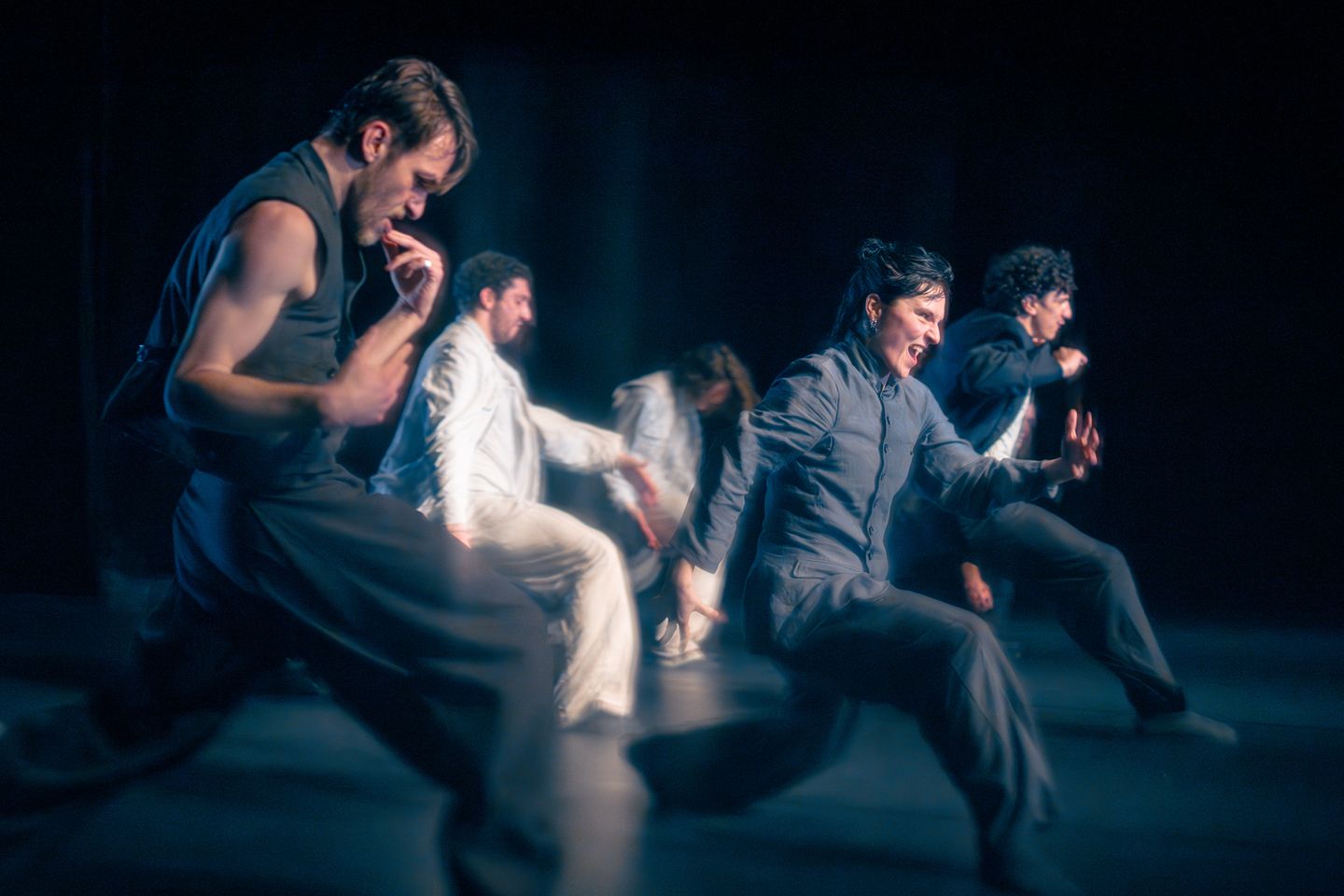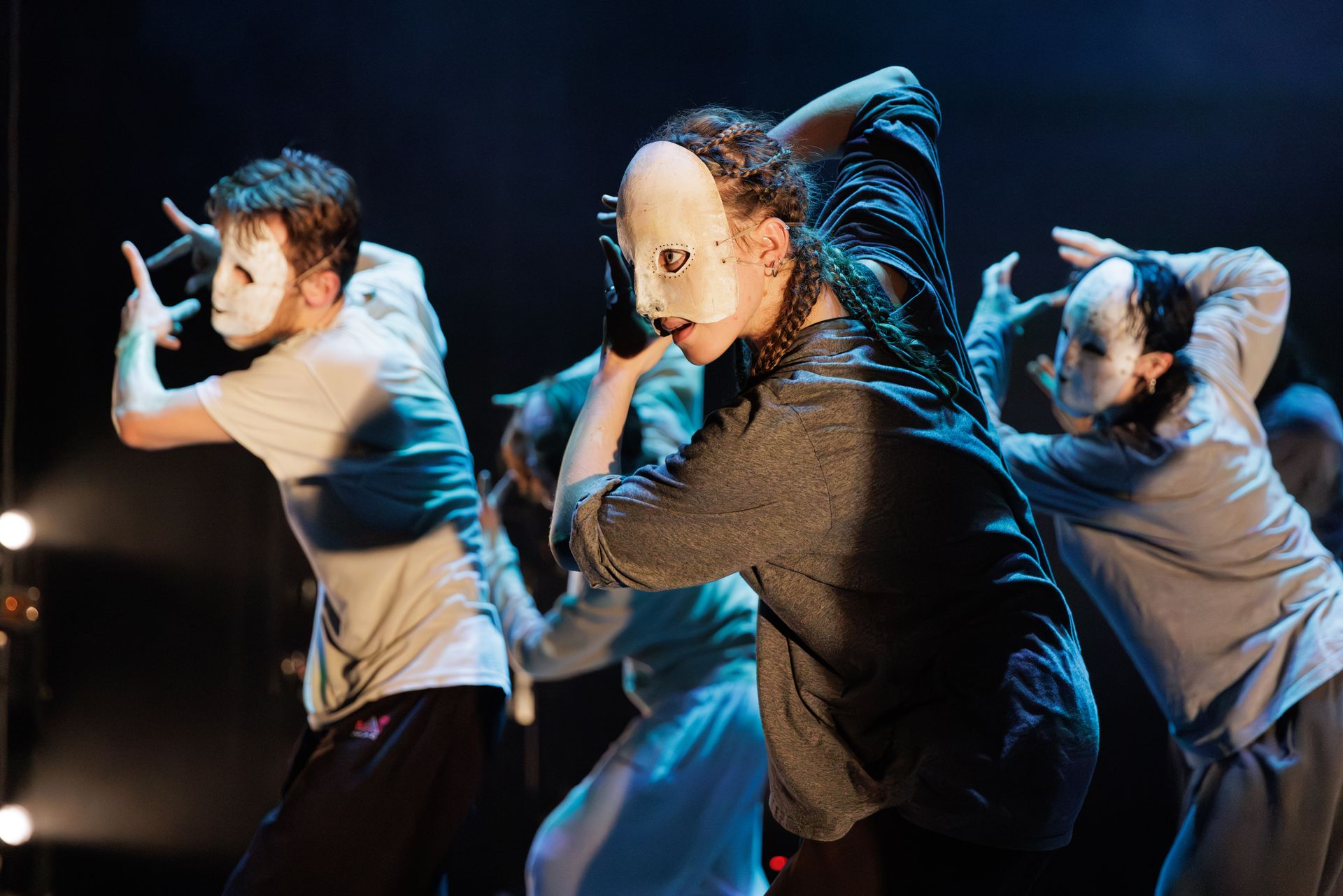In Italian, Pupo refers to both a child and a puppet. Sofia Nappi's new piece is inspired by Pinocchio, the wooden puppet who longs to become a real boy. Supported by MART
Upcoming shows
The focus is on the metamorphosis of the puppet: how does this slow transformation from one state to another take place? How does the naive child grow up and no longer allow himself to be manipulated by others? Carlo Collodi's world-famous children's book inspired the young Italian choreographer to create a modern coming-of-age story, through which fairy-tale characters such as the fox and tomcat, the talking cricket and the blue fairy also haunt in associations.
Sofia Nappi's dance language combines the wild, loose flow of Israeli dance, as we know it from Ohad Naharin's Gaga language and Hofesh Shechter, with elements of breakdance such as locking or popping when it comes to the jerky movements of the puppet. With minimal gestures and flashing leitmotifs, embedded in the often mirrored, unbridled desire to move of a young person, the choreographer refers to personal growth and gaining of awareness: how the innocent, curious child awakens in the world, how it meets people and plays with them, testing its limits. How then the character encounters the first temptations such as greed, how he is gullibly deceived, comes to terms with himself and finally embraces the power of forgiveness. Through his own realisation and though the help of leading figures, Pinocchio finds himself: choreographically the individual connects to collectiveness on a mantra — like music that symbolises a moment of transformation.
The strongly rhythmic musical collage, to which Pinocchio dances, ranges from the folkloristic sound of a guitar to solemn, mystical sounds; at the end, the melancholy of memory resonates to a delicate Chopin nocturne. Nappi does not pantomime, but integrates minimalist images into her dance — the crazy twitching of a marionette or the pulling of strings and manipulation, the lightning-like growth of a long nose, seductive tango steps or animal movements. White face masks that mysteriously appear and disappear on the faces allude to the stereotypes and social criticism of the old Italian commedia dell'arte. A strong, atmospheric lighting design sets the scene for the central hero and all the influences on him.
Pupo was created for adults, but will give people of all ages something to look at and think about. The choreographer sees the story of the transformed wooden puppet as a lifelong attempt to become the best version of oneself. We should never forget the child in ourselves, the impulsive, playful wooden puppet that we once were, the exuberant and irrepressible desire to dance we once had. The wood from which Pinocchio is cut is humanitas, humanity — the Italian philosopher Benedetto Croce said about the iconic figure of the little wooden puppet who wants so much to be a boy.
Coproduced by Burghof Lörrach (DE), Danse Danse Montreal (CA), ecotopia dance productions (DE), Escher Theater (LU), MART Foundation (US), ROXY Ulm (DE), Sosta Palmizi (IT), Tanz Köln (DE), Theater Winterthur (CH), Tollhaus Karlsruhe (DE).
About Sofia Nappi
The international choreographer and dancer from Italy trained at the Ailey School in New York and deepened her studies internationally. The close contact with the Hofesh Shechter Dance Company and her involvement with Ohad Naharin's Gaga language had a particular influence on her work.
Sofia Nappi is artistic director and co-founder of KOMOCO, supported by the contemporary dance collective Sosta Palmizi in Cortona and her first muses Adriano Popolo Rubbio and Paolo Piancastelli. Already with her first pieces for KOMOCO / Sofia Nappi, she won the Introdans Partner Award 2021 at the Rotterdam International Duet Choreography Competition 2021 as well as the First Prize, the Critics' Prize and the Production Prize of the Tanja-Liedtke-Stiftung at the 35th International Competition for Choreography Hannover 2021. KOMOCO / Sofia Nappi has performed in Germany, Austria, the USA, Italy, the Netherlands, Israel, France, Albania, Spain, the Canary Islands, Mexico, Kosovo, Belgium and Hungary as well as at numerous Italian and international festivals and dance platforms, including La Biennale Di Venezia, the Albania Meeting Dance Festival, the RomaEuropa Festival, MASDANZA, the COLOURS International Dance Festival in Stuttgart and the Teatro del Canal Madrid.
What’s more, Sofia Nappi regularly collaborates as a freelance choreographer with renowned international ballet and dance companies: In December 2021, she staged her piece Holelah, originally created for La Biennale Di Venezia 2019, with the ballet company of the Nationaltheater Mannheim. 2023 saw the world premieres of Tagadà for the Staatsballett Hannover and Moving Cloud for the Scottish Dance Theater as a contribution to the bill Celtic Connections. A new creation for the Dutch company Introdans celebrated its premiere in May 2023. For 2024, the Nederlands Dans Theater has commissioned a new work from her, and she will sign for the choreography for dancers and chorus in the opera Platée for the GöteborgsOperan.
At the same time, Sofia Nappi works internationally in research and professional training, e.g. at the Tisch School of the Arts at New York University, at the Micadanses Dance Research Center at Le Carreau du Temple in Paris, at the Henny Jurriëns Studio in Amsterdam, at Elephant in the Black Box and at Danza180 in Madrid, at Tanzpunkt Hannover, at the D. A.F. Dance Arts Faculty in Rome, at the Balletto di Toscana or at Opus Ballet in Florence, always in close collaboration with the dancers of her company KOMOCO / Sofia Nappi.


